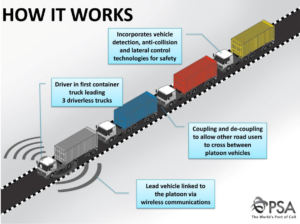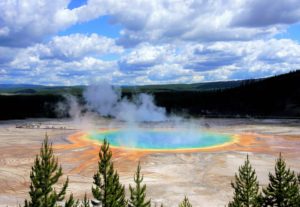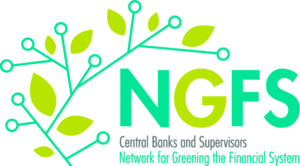
Even though it is only eight days into the year when we’re writing this, December 2020 seems so long ago. We’re already full steam ahead into January 2021. Calendars filling up and looking ahead into Q2. Since December often is a rush to the end of the year, we suspect you may have missed a number of the always interesting things happening in the cleantech industry. Let’s go through those news items together now.
Hello Cleantech 2.0
Technically, MIT Technology Review’s article “How VCs can avoid another bloodbath as the clean-tech boom 2.0 begins” was published in late-November, but it is definitely worth including here. We hope you’ll let this one slide. We recommend reading it to orient yourself for the new year ahead and as a reminder of our cleantech past.
As you’ve likely noticed, more and more climate-focused venture firms are emerging with a newfound confidence in the future of cleantech. Be it due to the pledges from the soon-to-be United States federal government or commitments from corporations, venture capitalists and entrepreneurs are feeling more confident and secure about the future and positive impact of climate technologies.
While cleantech companies still require money and time to prove and grow their technologies, many technologies have gotten cheaper, more efficient, and more attractive and marketable. Investors have also learned a lot since the early aughts and now have some options to protect themselves. Some examples include investing in “drop-in” technological solutions and adopting more long-term investment models.
We welcome the increase in climate-focused investors with open arms but understand that they will likely continue to be cautiously risk-averse often choosing to invest at later stages. Along with an already tenuous economy, early-stage cleantech startups will continue to face challenges unless we all help bridge the gap between the research labs and universities and the traditional sources of high-risk financing. As we note prominently on our website, “without financial and business support across this ‘valley of death,’ many of the promising technologies we need to help address climate change will never be successfully commercialized.”
Help make Cleantech 2.0 a success by helping us to support early-stage climate technologies — join our network of Subject Matter Experts here and donate here. Also, we wholeheartedly encourage early-stage cleantech startups in the Mid-Continent region of the United States to apply today for potential funding through our 501vc® Seed Fund.
Charging After Midnight

Photo by Ed Harvey on Unsplash
In early December, the “Pennsylvania Public Utility Commission approved a formal plan allowing Peco to roll out “time-of-use” rates for customers” in September 2021, according to the Philadelphia Inquirer. While participating in the plan is voluntary, customers have the option to save money by using electricity at off-peak hours — from midnight till 6 a.m. every day.
While residential time-of-use and other time varying rate structures can shift power consumption away from peak demand and drive savings for both customers and utilities, concerns are emerging about whether such rate structures are good for all customers. In fact, some have doubts about whether they can be designed and implemented both fairly and effectively. Will time-of-use rates continue to spread across the country?
Specifying that the Driver was Human

Example of semi-autonomous truck platooning technology in New Atlas
We learned a new vocab word in December — platooning. According to Wikipedia, “in transportation, platooning or flocking is a method for driving a group of vehicles together.” Already used in the commercial trucking industry, platooning could allow the Toronto Transit Commission to link two or more buses together using sensor technology.
The lead bus would be operated by a human driver, while the buses behind it would not — semi-autonomously. This technology does not yet exist for buses, but it isn’t far away. Radio Canada International shares that using this technology in the future could provide “‘enhanced safety, lower emissions, improved operational flexibility, and significantly lower capital and operating costs when compared to light rail transit,’ the latter requiring expensive rail line infrastructure.” What other creative ways can we use platooning? How else can cities take advantage of semi-autonomous technology to lower emissions and cut costs — before going fully autonomous?
Yellowstone National Park’s Tasting Menu

Photo by MissMushroom on Unsplash
Chicago-based fungi protein company, Nature’s Fynd, announced in December they had “raised $45 million in venture debt and equipment financing from Oxford Finance and Trinity Capital,” according to ChicagoInno. This funding will help them expand their food product line and accelerate their go-to-market strategy.
Interested in learning more about their nutritional fungi-based protein, Fy, and why they chose to locate their manufacturing facility on Chicago’s South Side? Watch Clean Energy Trust CEO Erik Birkerts speak with Thomas Jonas, Chief Executive Officer and Co-Founder of Nature’s Fynd, at last fall’s University Accelerator Demo Day here. We’ll be sure to keep you up to date on our friends at Nature’s Fynd — and let you know where you can try their goods at a store near you.
An EV Tuk-Tuk?

Photo by Electric Assisted Vehicles on Business Insider
The UK-based company, Electric Assisted Vehicles (EAV) foresees cutting “city traffic congestion in half in the next five years” according to Business Insider. By using their EAV Taxi, which is 90% lighter than a hybrid or electric vehicle, they could “prevent about 10.14 tons of carbon dioxide.” This lightweight, electric bicycle/ extra-mini minivan is set to deliver this spring, so continue to look both ways when crossing the road as they’ll be allowed to drive in both bike and car lanes.
Other December Highlights

- In hopes of preparing the financial system for the effects of climate change, the Federal Reserve is joining the Network of Central Banks and Supervisors for Greening the Financial System to focus on conducting research and shaping policies. View the full article here (behind a paywall).
- NextEra Energy Resources announced the acquisition of eIQ Mobility, a Oakland, California-based software provider of mobility planning solutions. This acquisition allows NextEra Energy Resources to help customers identify economic operational and sustainable pathways for fleet vehicle conversions.
- Ride-hailing company Uber sold its flying taxi business, Uber Elevate, to Joby Aviation (more here) — and Aurora Innovation has agreed to buy Uber’s self-driving unit (more here).
Read more of Clean Energy Trust’s news and perspectives on Medium.


